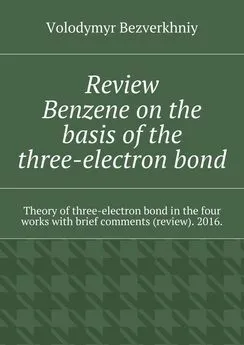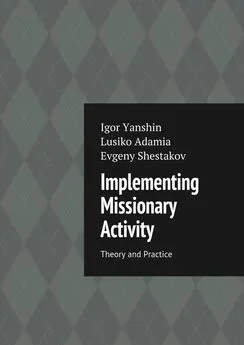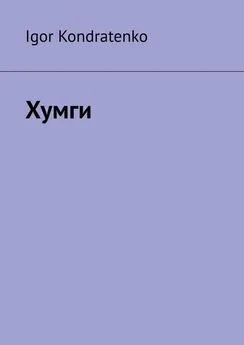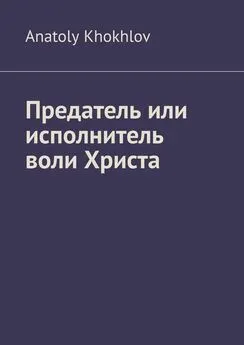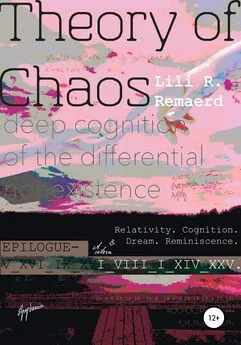Anatoly Kondratenko - Probabilistic Theory of Stock Exchanges
- Название:Probabilistic Theory of Stock Exchanges
- Автор:
- Жанр:
- Издательство:неизвестно
- Год:2022
- ISBN:нет данных
- Рейтинг:
- Избранное:Добавить в избранное
-
Отзывы:
-
Ваша оценка:
Anatoly Kondratenko - Probabilistic Theory of Stock Exchanges краткое содержание
Probabilistic Theory of Stock Exchanges - читать онлайн бесплатно ознакомительный отрывок
Интервал:
Закладка:
We have selected several different assets traded on the Moscow Exchange as the initial objects of our study, for the simple reason that historical data on the trading of these assets have recently been posted on the exchange website, so any researcher can use them to verify the correctness of our calculations. Let us emphasize that these historical data contain almost all quotations of all exchange agents at each moment of time during the whole trading day, not only quotations in a small «cup» near the current market price.
Let us clarify once again: this book represents, in fact, the results of the subsequent development of probabilistic economics, which we developed earlier [Kondratenko, 2005, 2015] for quantitative research of multicommodity multi-agent market economies. This theory in a fairly general form is developed on the basis of one axiom and six general principles that have such a simple and clear logic and rationale under them that they can be considered mandatory for inclusion in any sufficiently adequate economic theory. The way this theory can be used to set and quantitatively solve problems of real economic practice is illustrated in the mentioned works by examples of the simplest model economies, namely one-commodity economies with one buyer and one seller. In the present paper, we show how these theories can be used to quantitatively describe more complex real market economic systems, e.g., highly organized regulated commodity, stock or financial markets with a generally unlimited number of agents, namely exchanges. It turned out that for this purpose it is enough to introduce one more important assumption, namely the equivalence hypothesis, which we will describe further in detail. The good agreement of the calculated exchange prices and trade volumes with the experimental values during the whole day trading session for various assets serves as a direct proof that the theory of exchanges is based on correct principles and hypotheses. The main final result of this work can be considered to be the creation of the organized markets (first of all exchanges) theory fundamentals, the application of which already at the initial development stage has given us an opportunity to shed light on the basic rules governing the functioning of highly organized markets.
Chapter 1
FUNDAMENTALS OF PROBABILISTIC ECONOMICS
"In what follows I have endeavored to reduce the complex phenomena of human economic activity to the simplest elements that can still be subjected to accurate observation, to apply to these elements the measure corresponding to their nature, and constantly adhering to this measure, to investigate the manner in which the more complex economic phenomena evolve from their elements according to definite principles".
Carl Menger [2007]
This chapter describes probabilistic economic theory in sufficient detail, starting from the formulation of the most general statement of the problem to the derivation of the fundamental formulas, using the simplest model of a two-agent economy as an example. To begin with and to avoid misunderstandings and ambiguities, let us repeat once again that, according to the ideology of the physical method, probabilistic economics is a theory that is developed using formal methods of theoretical physics or, in other words, by analogy with how theoretical physics is developed, but, fundamentally, it is an economic theory rather than a physical one, since it studies the structure and dynamics of the economic world, where rules are not in any way directly related to physical laws that describe the structure and dynamics of the natural world. This is already clear from the fact that the subjects of the economic world are people and their actions in the processes of exchange of goods and services, whereas the subjects of the physical world are particles and fields, in particular atoms. And, to be definite, let us also emphasize that this new economic theory was based on the classical concept of supply and demand, that was reinterpreted in the style of modern probabilistic scientific thinking.
There is no doubt that the modern real economy is a complex, nonequilibrium, dynamic system. Therefore, it is possible and necessary to actively study its structure and dynamics in different ways and from different points of view. Our point of view is that we look at the economy mainly as a set of a huge number of intelligently thinking and dynamically acting people, each of whom is "not only homo sapiens , but no less than homo agens " [Mises, 2005]. In order to solve problems and achieve goals, these "homo agens" or, more precisely, market agents, under the influence of constantly changing life and business circumstances, are forced almost continuously to make new important decisions related to the purchase and sale of goods and services, production, marketing, logistics, personnel control, etc. Being rational, these people try to make those decisions that will bring the greatest benefit and return on the efforts made. Such rational decisions can only be made on the basis of sufficient information available regarding the factors affecting their interests and decisions. This is why people are constantly in the process of searching for and processing new market information that is important to them. But the real world is such that we never fully have sufficient and reliable information about things of interest to us, primarily because of time constraints. Moreover, due to our limited mental and technical capabilities, we are not always able to correctly process and interpret even the information that we have at the right time and in the right place.
It is our deep conviction that human nature, as well as the nature of market economic systems, is such that all our knowledge of markets is only approximate, so all market decisions can only be approximately correct and optimal. Moreover, in practice we are Explicitly or implicitly aware of this fact and take it into account in our decision-making and evaluation of its consequences. Strictly speaking, our market decisions can only be probabilistic in nature. And since, according to our view of the market economy, all economic processes and phenomena are exclusively the result of the actions of all the economic agents, it inevitably follows from all of the above that all economic processes and phenomena in the market economy are also, to some extent, probabilistic in nature. Consequently, only one step remains to draw the fundamental conclusion that the market economy is not just a complex, dynamic, nonequilibrium system, but also a probabilistic one [von Neumann and Morgenstern, 1970; Kondratenko, 2005, 2015; Mises, 2005; Waltuch, 2008; Keynes, 1921; Farjoun, Machover, 1983; Ball, 2003]. Therefore, in order to present a sufficiently complete description of such complex probabilistic systems, the corresponding economic theory should also be largely probabilistic. For this, at least, it is necessary to incorporate the concept of uncertainty and probability into economic theory at a suitable mathematical level, i.e., to develop a dynamic probabilistic economic theory that is sufficiently adequate to economic reality. Our research is devoted mainly to achieving this goal.
In this paper, we further describe the basic mechanisms of supply and demand formation, as well as the mechanisms of price formation, trade volume formation, and equilibrium setting in markets. The emphasis is on a detailed description of the nature of these fundamental market concepts and definitions in the standard general scientific language of physics and mathematics, which will allow us to critically re-evaluate these concepts and definitions within the framework of probabilistic economics.
The main paradigm of probabilistic economics for us is the following statement already formulated above. All markets consist of people – buyers of some goods and simultaneously sellers of these goods. Everything the market does is done by these people, and it is the actions of all these people in the market that determine all the market results [Mises, 2005]. A similar claim was once made by Richard Feynman et al. [1978] regarding physical multiatomic systems. It is this circumstance that allows us to establish an analogy between multi-agent market economic systems and multiatom physical systems and to bring physical approaches and language into economic theory. Based on this main paradigm and with careful consideration of all the basic features of human activity, explored in detail by Mises [2005], we will define the following six principles of probabilistic economics, which are essentially general postulates:
Principe 1. Supply and demand principle;
Principe 2.Agent principle;
Principe 3.Institutional and environmental principle;
Principe 4.Dynamic and evolutionary principle;
Principe 5.Trade volume maximization principle;
Principe 6.Uncertainty and probability principle.
The demand and supply principle reflects the fact that almost all important effects and processes in the market are determined by the interaction of supply and demand in the market. The agent principle testifies to the unique driving role of interacting market agents and the significant contribution to this interaction of social cooperation between them in the modern market economy. The institutional and environmental principle expresses the fact that the interaction of agents with different social institutions, different stakeholders and the external natural environment should be taken into account together with the interaction between the agents. The dynamic and evolutionary principle reflects the fact that market behavior is to some extent deterministic in nature and therefore, generally, can be analyzed by means of some equations of motion that describe both stationary behavior and the evolution of markets. The trade volume maximization principle determines the direction of the generally fairly free market under the influence of market forces. The uncertainty and probability principle shows that all market processes and phenomena, including decision-making, are probabilistic in nature and thus help us to understand what mathematical apparatus we need to adequately describe the behavior of agents and the market as a whole in the circumstances of uncertainty.
In essence, these principles define the main acting forces in the market and the main features of the market structure, so when performing specific studies of markets in our physico-economic models, they should all be taken into account, if possible, simultaneously, since they all represent market effects of the same significance in terms of influence on the final result of market operation, namely on the price structure and trade volumes in the market at each moment. If, for example, a certain economic study does not take into account the influence of the state, it cannot claim to be an adequate description of the modern economic world in which the role of the state is paramount: the state can both accelerate and suppress economic activity of other market agents. And the role of the state in the modern economy is twofold: it can both set important rules and introduce new institutions, thereby influencing the strategies of market agents, and be an active and strong market agent itself.
We emphasize that in these principles, if we consider them one by one, we can almost always find their «roots» in separate works of the previously cited authors of classical economic theory: Adam Smith (theory of commodity exchange, etc.), Carl Menger (theory of subjective value, etc.) and Ludwig von Mises (principle of methodological individualism, concept of market process, dynamic interpretation of S&D law, etc.). Here they are brought together, formulated quite clearly and it is emphasized that they should be taken into account simultaneously in the development of any economic theory, claiming for an adequate description of the real economic world, in which living people, rather than fictional characters like homo economicus in imaginary markets with perfect competition and with a supposedly all-powerful market hand, formed only by agents representing people and business without regard to the role of the state. What is brand new here, are the dynamic and evolutionary principle with the idea of finding equations of motion for market agents, the trade volume maximization principle to establish trends in the movement of market prices and the uncertainty and probability principle with the idea of using probabilistic strategies that the agents use to put their quotations and, most importantly, the elaborated mathematical apparatus, which allows for extensive quantitative research of real economic systems, including organized markets.
Читать дальшеИнтервал:
Закладка:

